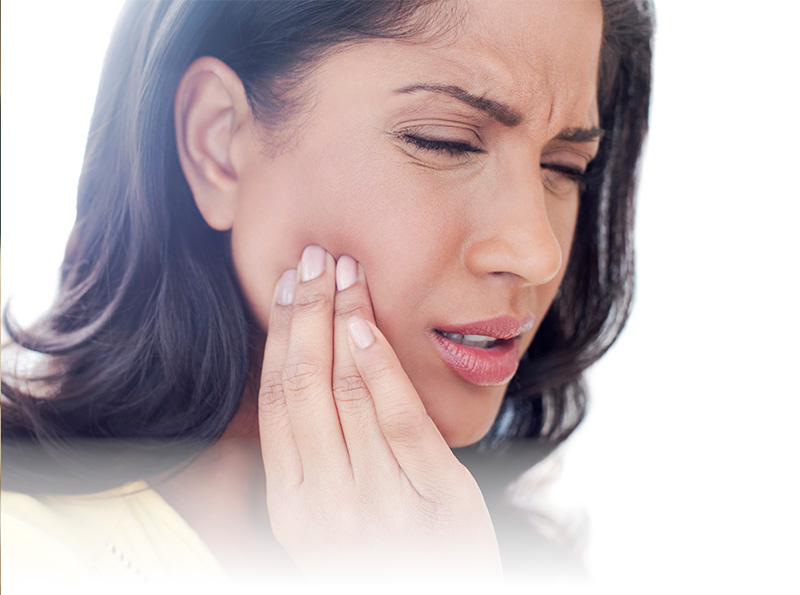
TMJ Disorder
TMJ Overview
The temporomandibular joint is a hinge located immediately in front of your ears that allows you to shift your jaw for talking, chewing, and other purposes. The mandible (lower jaw) and the temporal bone are held together by this joint. The TMJ is one of the most complex joints in the body, allowing forward and sideways movement of the jaw. It is important to seek attention from a TMJ specialist rather than general medical care if there are problems or discomfort in the TMJ.
Needing Professional Care
If a patient is diagnosed with TMJ disorder, we can suggest a custom-made oral appliance to help alleviate the pain they’re experiencing. Patients should be wary of generic devices, which are available for purchase online or over-the-counter. These products aren’t custom-made or professionally fitted, and they’re built on the one-size-fits-all philosophy.
Every patient’s bite, oral features, and jaw size/position are different. Patients must be properly equipped in order to avoid future TMJ problems. The appliance is usually made of soft or rigid acrylic material and is designed to fit comfortably within the mouth.
Poor Jaw Development in Relation to Sleep-Disordered Breathing
Dr. Nolf explains why sleep-disordered breathing has become more common in recent decades and covers the root causes of poorly developed jaw muscles. Dr. Nolf also notes symptoms of sleep-disordered breathing and names several health issues linked to breathing conditions.
Treatment with Oral Devices
Oral devices are a popular treatment choice for TMJ disorder because they are less invasive. Surgery is only considered after all other choices have been exhausted. Using our non-surgical techniques, we can usually stop surgery. Our patented approaches, which involve the use of TMJ instruments, effectively manage TMJ disorder.
Mouth splints or orthotics are the right terms for TMJ products. These oral devices help to hold the jaw in the right position, reducing jaw strain. They function by preventing teeth grinding and clenching, preventing the jaw from locking, and assisting with facial and jaw muscle relaxation. Muscle spasms and discomfort are reduced as a result of this prevention.
TMJ Treatment Process
If a patient requires TMJ care, the dentist will recommend an oral device that will address their specific issue. To determine the cause of the issue, a thorough investigation and advanced testing will be initiated. The patient will be given a personalized treatment plan that could include an oral appliance, as well as exercise recommendations, supplement recommendations, and other expert advice and therapy.
If an oral appliance is recommended, dentists will prescribe one of the two types of oral devices used to treat TMJ disorders:
- Stabilization splints– The upper and lower jaws are covered by the oral appliance with the splint. Depending on the maker, the material can be hard or soft. Teeth grinding can be prevented with splints, which relieves tension on the TMJ muscles. They also help to relieve facial pain caused by overuse of the jaw muscles. The patient will wear the splint at night and remove it when he or she wakes up.
- Repositioning splints– TMJ condition is often caused by a misaligned jaw. A Repositioning Splint is a safe choice in this situation. The jaw is moved forward in this form of splint. It will gradually relieve pain and eliminate the popping and clicking sounds. The lower jaw would be pulled forward after wearing the splint. It may be necessary to wear the splint for 24 hours a day at first, but wear time will likely decrease as the patient’s pain subsides.
